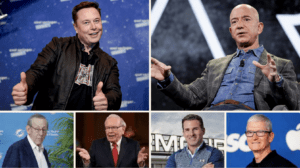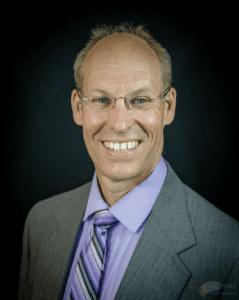And voters REJECT billionaire’s arena subsidy
Editor’s Note: This is the first in a new series of quarterly reports that look at the relationship between race, ethnicity, and economic development.

Economic development subsidy packages to companies can be massive. Thousands of deals totaling up to $95 billion are awarded by states and localities every year to companies both foreign-based and domestic. Large companies dominate the take.
Good Jobs First has a name for the biggest of these – “megadeals” – or workplaces given at least $50 million in state and local tax dollars. In looking at the 50 most expensive of these, several things stand out: Most are multinational companies that answer not to workers or communities but to shareholders – indeed, all but seven are publicly traded companies. And their executive ranks include some of the richest people in the world, who are primarily white men.
When we talk about economic development incentives exacerbating racialized inequality, this is one glaring way. Subsidies transfer wealth from the public to companies led by white male executives.
Looking at the leaders of companies that have received the biggest-ever subsidy packages is a Who’s Who of the World’s Richest Men: Amazon’s Jeff Bezos, Tesla’s Elon Musk, Berkshire Hathaway’s Warren Buffet, Apple’s Tim Cook, real estate mogul Stephen Ross, Rocket Mortgage’s Dan Gilbert, and Under Armour’s Kevin Plank.
Good Jobs First analyzed the race, ethnicity and gender of the people who led the 50 companies the year they received the economic development megadeals, ranging in size from $617 million to $8.7 billion for a total of $85,686,093,377.
In all, there are *47 people, since three men – Bezos, Musk, and Boeing’s W. James McNerney Jr. – landed Top-50 megadeals twice.
Voters Reject Plan to Build Billionaire a New Arena

Speaking of wealthy, powerful men, the elite group who own sports teams have been on a winning streak. They managed to convince New Yorkers, Marylanders and Tennesseans to turn over billions of dollars in public money to help build glitzy new stadiums (for the Bills, Orioles/Ravens and Titans), setting new subsidy records as they go.
As I write, lobbyists with other pro sports teams – the Chicago Bears, Washington Commanders and the Oakland Athletics among them – are explaining why their stadiums should be paid for with tax dollars, touting all the jobs, all the tourism, all the new tax revenue the projects will allegedly bring.
The facts will not be on their side.
“We [sports economists] all agree that the ideal amount of public funding is either zero or awfully close to zero,” Victor Matheson, a sports economist and professor at the College of the Holy Cross in Massachusetts, told the Nevada Independent in a June 4 story about the A’s effort to get public subsidies in Nevada. “These are typically just gigantic giveaways to billionaire owners at the expense of taxpayers. It’s the sort of thing we generally wouldn’t do for other types of entertainment venues, other types of retail venues.”
And last month in Tempe, Arizona, voters were also not on the side of a wealthy pro sports owner seeking taxpayer dollars for a new National Hockey League area. They soundly rejected a ballot initiative that would paved the way for the new subsidized arena.

The Coyotes are owned by a billionaire named Alex Meruelo, who approached leaders in Tempe after the City of Glendale nixed his team’s lease after the 2021-2022 season for frequently being late on rental payments and sometimes failing to pay what they owed. The City of Tempe agreed to help pay for the area as part of a larger (stop me if you’ve heard this before) “entertainment district” that would eventually be build out to include retail, restaurants, a music venue and luxury housing.
Supporters called it a “win-win,” claiming no tax money would be at risk. The Grand Canyon Institute, a non-partisan think tank, did its own analysis. I talked to Dave Wells, the research director at the Grand Canyon Institute, about their findings.
Here’s our conversation.
The Tempe vote was good. Shy of ending subsidies for professional sports venues altogether, voters should always have the opportunity to decide they’re the best uses of their money.
Hope you’re listening, Nevada, which in recent weeks has been considering a request from A’s billionaire owner John Fisher (who inherited his wealth from his parents, who co-founded Gap, Inc.) for $380 billion from the public.
Follow the latest on this deal, at Field of Schemes.
Quote of the week:
“You’ve all called us in here for a special session and are asking, minimally, for the state to give you all $36 million per year for the next five years for a taxpayer-funded stadium at the same time that the governor has vetoed funding for summer school, a bill to support children’s mental health, a bill requiring paid family leave, all because the governor said we couldn’t afford them,” Democratic State Sen. Rochelle Nguyen asked team representatives during a special session on June 7. “Can you explain to me why we need to provide hundreds of millions of dollars for a billionaire’s team to come to the Las Vegas Strip, on some of the most valuable property in the world, if we can’t provide funding for critical resources for summer school and health care?”